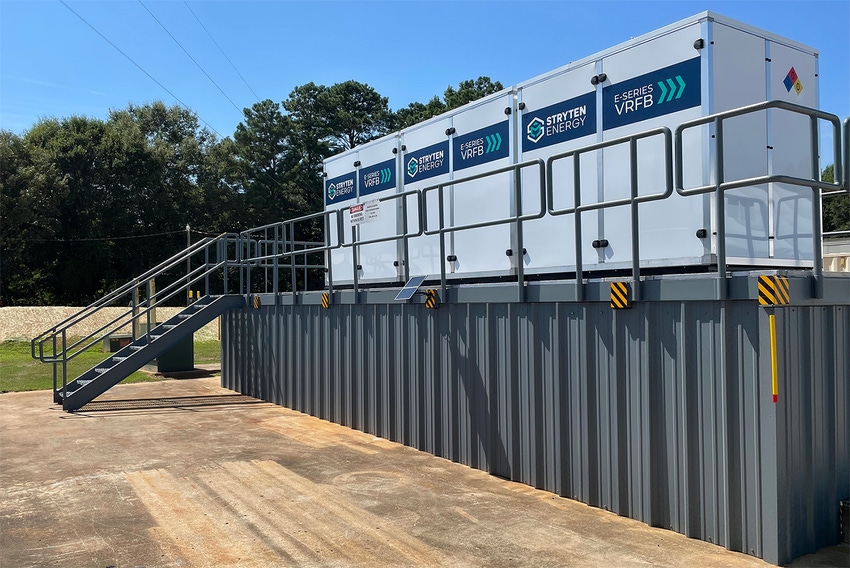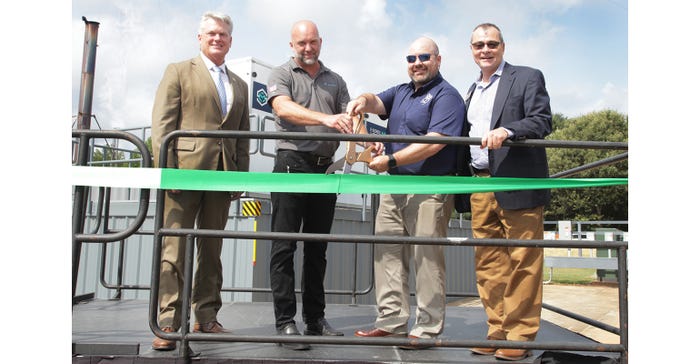Key Trends Shaping the 2024 Energy Storage Supply Chain
Jeremy Furr, Senior VP at Stryten Energy, outlines three pivotal trends driving the domestic energy storage sector toward a cleaner, more resilient future.

As the world collectively steers away from fossil fuel production, the energy sector faces the pressing challenge of meeting escalating demand. In a recent editorial on the company’s blog (and shared to the press), Jeremy Furr, Senior Vice President of Strategic Sourcing at Stryten Energy, shed light on the latest supply chain trends shaping the future of clean energy. Furr explores three key aspects driving the efforts of energy storage manufacturers in 2024.
Strengthening and expanding domestic battery recycling efforts
Furr acknowledges the success achieved in domestic lead battery recycling, noting the nearly 100% recycling rates in the US. He makes an argument for intensifying these efforts, highlighting the economic significance of the lead battery industry. Furr advocates for a reduction in unnecessary costs associated with exporting and importing batteries, calling for policymakers to ensure the industry remains competitive on the global stage:
"In 2024, policymakers should work to ensure that the lead battery industry remains competitive with foreign suppliers, building on the success of our nearly 100% lead battery recycling rates."
Furr stresses the economic impact, stating, “These vital industries contribute nearly $33 billion to the U.S. economy, support more than 120,000 American jobs and strengthen domestic energy security and resilience.” He points out the importance of keeping lead battery recycling within US borders, saying, “Exporting batteries for recycling, then importing finished batteries from foreign manufacturers creates unnecessary costs.”
Furr underscores the commitment to safety and environmental controls in US battery manufacturing, emphasizing the need for adherence to these standards throughout the supply chain. He highlights the need for a collaborative effort in 2024 to reinforce the lead battery recycling supply chain further.
Pushing toward a flow battery supply chain
Furr introduces the promising realm of vanadium redox flow batteries (VRFB) as key players in the clean energy-driven future. He places emphasis on the VRFB's near-infinite lifecycle and sustainability, drawing parallels with the successful domestic lead battery supply chain. Furr anticipates a groundbreaking year for VRFB, expecting progress in establishing a robust supply chain:
"2024 will likely see groundbreakings for electrolyte manufacturing facilities centrally located in the U.S., reducing shipping costs and efforts to establish production of storage system components and battery assembly plants in North America."
Drawing attention to the dependency on foreign sources for lithium batteries, Furr calls for 2024 to be the year for lithium recyclers to prove their capabilities. With electric vehicle lithium batteries reaching the end of life, the editorial envisions the necessity for domestic facilities to be operational, mitigating the risk of supply chain disruptions.
Furr notes, “With the majority of lithium batteries produced abroad, the U.S. is vulnerable to supply chain disruptions for this technology.” He calls for a proactive approach in 2024, stating, “Lithium recyclers will be responsible for ensuring the U.S. has enough capacity to handle the wave domestically.”
Anticipating groundbreakings for electrolyte manufacturing facilities in the U.S., Furr sees 2024 as a year of significant progress for VRFB. He envisions efforts to localize production of storage system components and battery assembly plants, reducing costs associated with shipping.
Collaboration to advance clean energy transition
Furr sheds light on the legislative support garnered by clean energy initiatives in preceding years. He identifies key acts such as the Chips and Science Act, the Inflation Reduction Act, and the Infrastructure Investment and Jobs Act, which make projects supporting the development of the domestic energy supply chain financially attractive. In 2024, Furr urges battery manufacturers to capitalize on this momentum by engaging with the Department of Energy and taking advantage of incentives.
Furr underscores the importance of collaboration at both the operational and strategic levels. He emphasizes the lessons learned from the pandemic, particularly the advantage of shorter supply chains in times of crisis. He advocates for transparent partnerships, stating, “More transparent partnerships can help customers ensure they have the supply they need to successfully run their operations.”
Highlighting the collaborative efforts needed to navigate potential roadblocks, Furr envisions a year of refining and building in 2024. He emphasizes the role of these collaborative initiatives in preparing for supply chain disruptions, noting that sharing data early can lead to more effective problem-solving.
"2024 will be a year of collaboration between manufacturers and suppliers, as well as with policymakers, as we strive to build a sustainable and resilient clean energy future," he stated.
A year of refining and building
Furr concludes by emphasizing the critical nature of these supply chain trends for the future of clean energy. He assigns specific tasks for each key battery chemistry, urging manufacturers to refine and improve existing supply chains:
“For lead, manufacturers must improve upon an already robust supply chain by keeping more recyclable batteries at home.
“For lithium, domestic recyclers need to prove their operations are viable.
“And for vanadium, manufacturers must move from successful testing to building the foundation of a sustainable supply chain.”
Furr stresses the importance of continued collaboration, open communication, and the industry's role in leading the charge toward more sustainable, environmentally friendly, and resilient energy technology in 2024. The groundwork for the clean energy transition has been laid over the last decade,” he finished. “Now, in 2024, the energy storage industry is poised to lead the way in developing a cleaner, more sustainable future."

Stryten Energy, Senior VP Jeremy Furr. Image courtesy of Stryten Energy
About the Author(s)
You May Also Like






